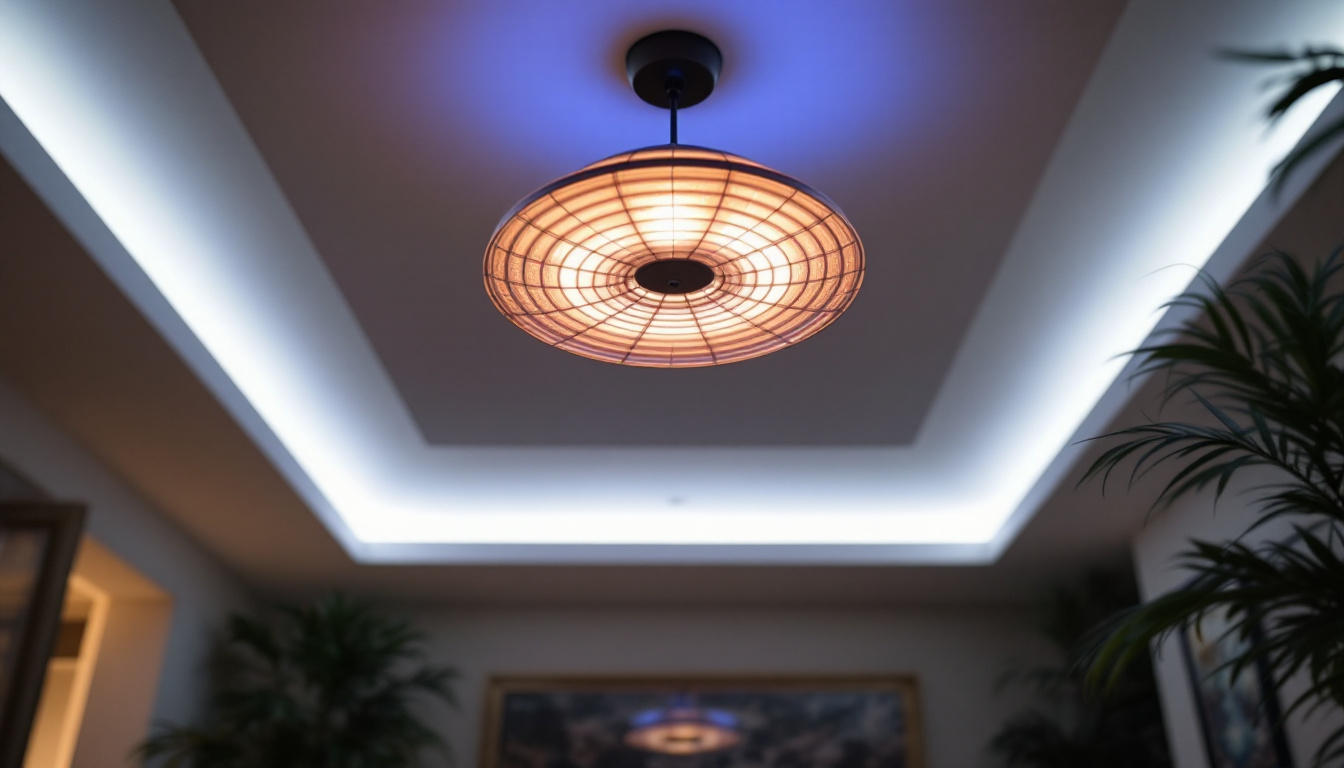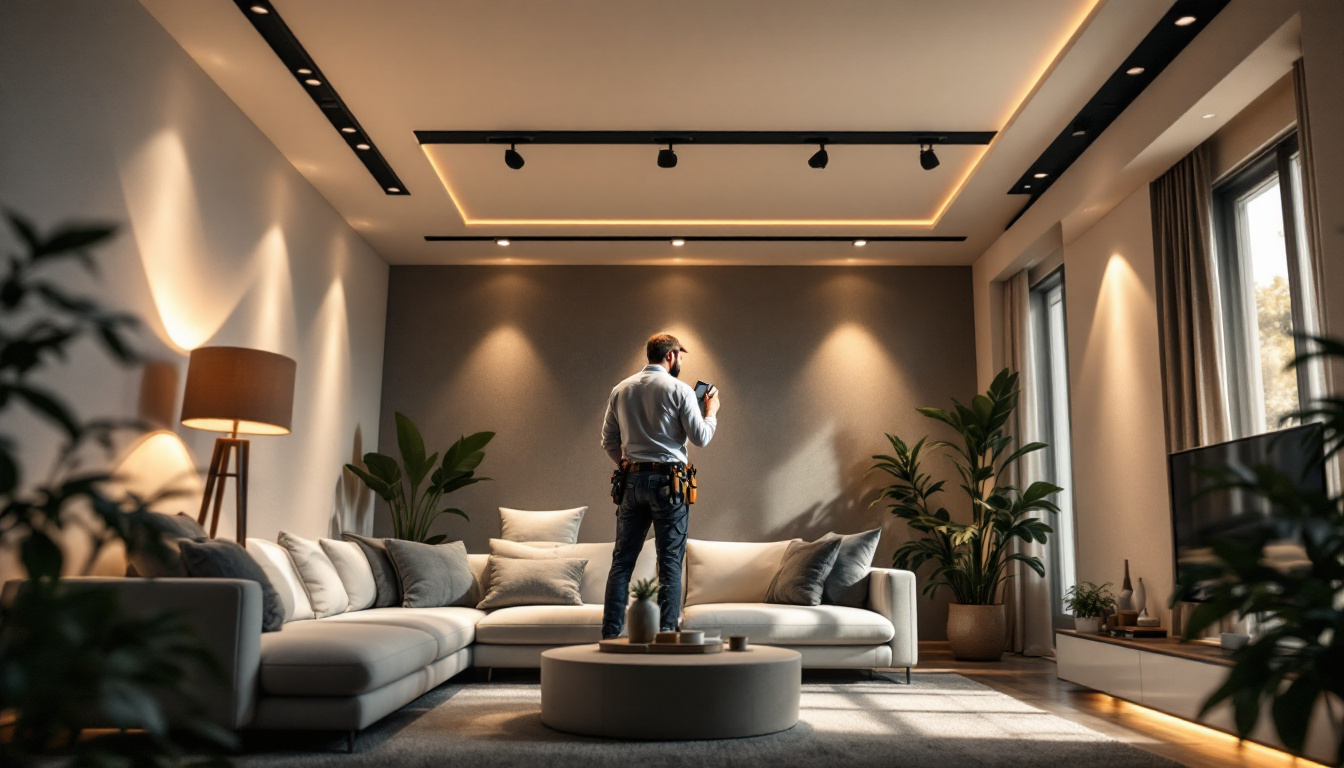
In the world of lighting, the ceiling lamp remains a staple for both residential and commercial spaces. Its versatility and functionality make it an essential fixture for lighting contractors to understand. This article delves into the various aspects of ceiling lamps, offering insights that every lighting contractor should be aware of to enhance their expertise and service offerings.
Ceiling lamps come in various designs and functionalities, catering to different needs and preferences. Understanding these types is crucial for lighting contractors to recommend the right solutions to their clients.
Flush Mount Ceiling Lamps are designed to sit directly against the ceiling, making them ideal for spaces with low ceilings. They provide a clean and unobtrusive look while delivering ample light. These fixtures are often used in hallways, kitchens, and bathrooms where space is limited.
When selecting flush mount lamps, consider the wattage and brightness to ensure they meet the lighting requirements of the space. Additionally, the style should complement the overall decor, whether it be modern, traditional, or transitional. Many flush mount designs also incorporate energy-efficient LED technology, which not only reduces electricity bills but also has a longer lifespan compared to traditional bulbs. This makes them an eco-friendly choice, appealing to environmentally conscious homeowners.
Pendant Lights hang from the ceiling and can serve as both functional and decorative elements. They are often used in dining areas, kitchens, and entryways, adding a touch of style while providing targeted illumination.
When installing pendant lights, it’s important to consider the height at which they hang. A general rule of thumb is to position them approximately 30 to 36 inches above dining tables or kitchen islands. This ensures adequate lighting while maintaining an aesthetically pleasing look. Additionally, pendant lights come in a variety of shapes, sizes, and materials, allowing for personalization that can reflect the homeowner’s taste. For instance, glass pendants can create a more airy feel, while metal fixtures can add a touch of industrial charm. Layering multiple pendants in a row can also create a dramatic effect, enhancing the visual interest of the space.
Chandeliers are a classic choice for adding elegance and sophistication to a room. They come in various styles, from ornate designs with crystals to minimalist modern options. Chandeliers are commonly found in dining rooms, entryways, and living rooms.
When recommending chandeliers, lighting contractors should assess the size of the room and the height of the ceiling. A larger chandelier may overpower a small room, while a small fixture might get lost in a spacious area. Proper sizing is key to achieving a balanced look. Furthermore, chandeliers can also serve as a focal point, drawing the eye and enhancing the overall ambiance of the room. Many modern designs now incorporate smart technology, allowing homeowners to adjust brightness and color temperature via smartphone apps, which adds versatility to their lighting scheme. This integration of technology not only enhances the functionality of chandeliers but also aligns with the growing trend of smart home solutions, making them a popular choice for contemporary spaces.
The type of bulb used in ceiling lamps can significantly impact both the ambiance and energy efficiency of a space. Lighting contractors must be knowledgeable about the various bulb options available.
LED bulbs have gained popularity due to their energy efficiency and long lifespan. They consume significantly less energy than incandescent bulbs and produce less heat, making them a safer option. Additionally, LED bulbs are available in various color temperatures, allowing contractors to create the desired atmosphere.
When recommending LED bulbs, consider the lumens required for the space. The brightness of a room is often determined by the total lumens provided by the bulbs used in the ceiling lamps.
While less energy-efficient than LEDs, incandescent bulbs are still favored for their warm light quality. They are often used in settings where a cozy and inviting atmosphere is desired. However, lighting contractors should inform clients about the higher energy costs associated with these bulbs.
It’s important to note that incandescent bulbs have a shorter lifespan compared to LEDs. Contractors should weigh the pros and cons when discussing options with clients.
Fluorescent bulbs are another option that provides bright, white light and are commonly used in commercial settings. They are energy-efficient and have a longer lifespan than incandescent bulbs. However, they may not be suitable for all residential applications due to their harsh light quality.
When installing fluorescent ceiling lamps, it’s essential to consider the color rendering index (CRI) to ensure that colors appear natural and vibrant in the space.
Proper installation is crucial for the functionality and safety of ceiling lamps. Lighting contractors must adhere to specific guidelines and best practices during the installation process.
Before beginning any installation, it’s vital to ensure that the power is turned off at the circuit breaker. This prevents electrical shocks and ensures the safety of both the contractor and the homeowner. Additionally, contractors should verify that the electrical wiring is up to code and capable of supporting the new fixture.
Using appropriate tools and equipment is also essential. Contractors should have the right ladder, wire connectors, and safety gear to facilitate a smooth installation process.
Different types of ceiling lamps require various mounting techniques. Flush mount lamps typically use a mounting bracket that attaches directly to the electrical box, while pendant lights may require additional support, especially if they are heavy.
For chandeliers, it’s crucial to ensure that the mounting hardware is secure and can support the weight of the fixture. Using a ceiling hook or a sturdy electrical box is recommended to prevent accidents.
The height at which ceiling lamps are installed can greatly affect the lighting quality and overall aesthetics of a room. For flush mounts, they should be installed close to the ceiling, while pendants and chandeliers should be hung at appropriate heights to provide adequate illumination without obstructing views.
Consider the layout of the room and the placement of furniture when determining the best location for ceiling lamps. This ensures that light is evenly distributed and that the fixture enhances the space rather than detracting from it.
Staying updated on design trends can help lighting contractors provide clients with the most current options available. The world of ceiling lamps is constantly evolving, with new styles and technologies emerging regularly.
Minimalism continues to be a popular trend in interior design, and ceiling lamps are no exception. Simple, clean lines and understated designs are favored for their ability to blend seamlessly into various decor styles. Lighting contractors should offer clients options that embody this aesthetic, focusing on functionality without sacrificing style.
Minimalist ceiling lamps often utilize materials like metal and glass, creating a sleek look that complements modern spaces. These fixtures can serve as a statement piece or an unobtrusive source of light.
The rise of smart home technology has influenced ceiling lamp designs, with many fixtures now incorporating smart capabilities. This allows homeowners to control their lighting through mobile apps or voice commands, enhancing convenience and energy efficiency.
Lighting contractors should familiarize themselves with various smart lighting systems and their compatibility with different ceiling lamps. Offering clients smart solutions can set contractors apart in a competitive market.
As sustainability becomes increasingly important, eco-friendly ceiling lamp designs are gaining traction. Many manufacturers are now producing fixtures made from recycled materials or designed to be energy-efficient.
Contractors should educate clients on the benefits of choosing eco-friendly options, including reduced energy consumption and a smaller carbon footprint. This not only appeals to environmentally conscious consumers but also aligns with modern design principles.
Proper maintenance of ceiling lamps is essential for ensuring their longevity and performance. Lighting contractors should provide clients with guidance on how to care for their fixtures.
Dust and grime can accumulate on ceiling lamps, affecting their brightness and overall appearance. Regular cleaning is necessary to maintain their aesthetic appeal. Contractors can recommend using a soft, dry cloth to wipe down fixtures, avoiding harsh chemicals that may damage finishes.
For more intricate designs, such as chandeliers, clients may need to remove crystals or decorative elements for thorough cleaning. Providing clear instructions on how to do this safely can enhance customer satisfaction.
Clients should be informed about the lifespan of the bulbs used in their ceiling lamps and when to replace them. For LED bulbs, this may be several years, while incandescent and fluorescent bulbs may need replacement more frequently.
Contractors can offer guidance on how to safely replace bulbs and recommend suitable replacements that match the original specifications. This ensures that clients maintain optimal lighting conditions in their spaces.
Ceiling lamps play a vital role in both functionality and aesthetics within any space. For lighting contractors, understanding the various types of ceiling lamps, bulb options, installation techniques, and design trends is essential for providing exceptional service to clients.
By staying informed and offering tailored solutions, lighting contractors can enhance their expertise and build lasting relationships with their customers. Whether it’s a simple flush mount or an elaborate chandelier, the right ceiling lamp can transform a room and elevate the overall design.
Ready to elevate your lighting projects with the finest selection of ceiling lamps? Look no further than LumenWholesale, where we provide lighting contractors with premium, spec-grade lighting products at unbeatable wholesale prices. Our commitment to quality, affordability, and convenience ensures that you get the most reliable and high-performance lighting solutions for every space. Take advantage of our hassle-free bulk buying and free shipping to secure the best value for your lighting needs. Discover wholesale lighting at the best value today and light up your projects with confidence.

Discover the essentials of top-rated recessed lighting with our comprehensive guide tailored for lighting contractors.

Discover essential insights into surface mounted LED lights tailored for lighting contractors.

Discover the essential checklist for lighting contractors installing solar-powered walkway lights.

Discover essential best practices for lighting contractors working with 4Ft light fixtures.